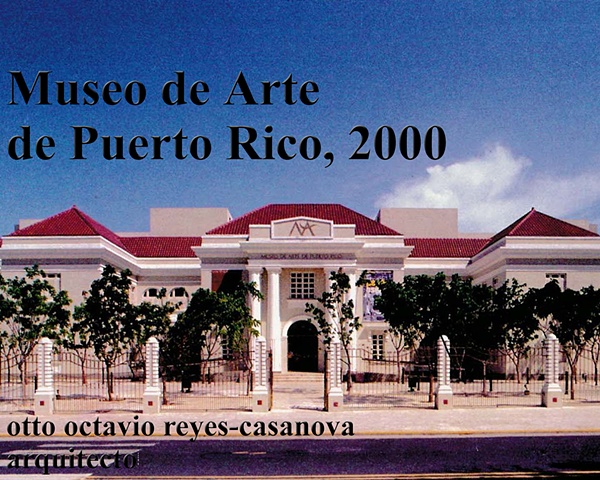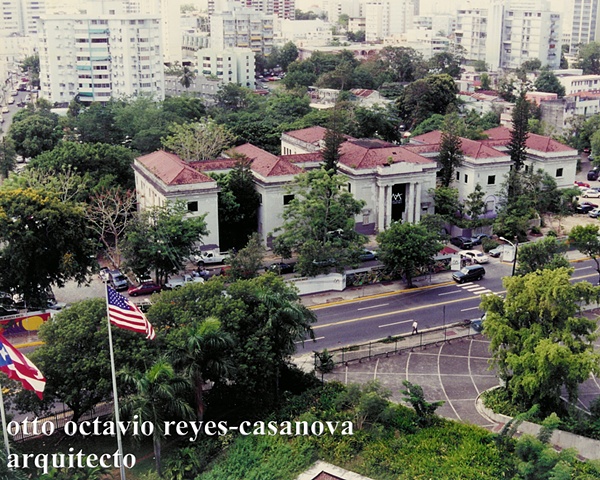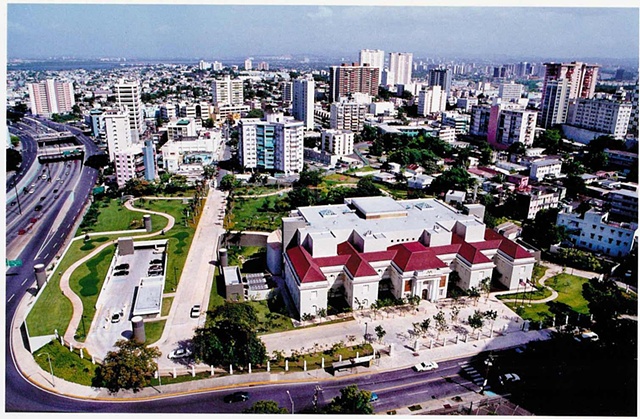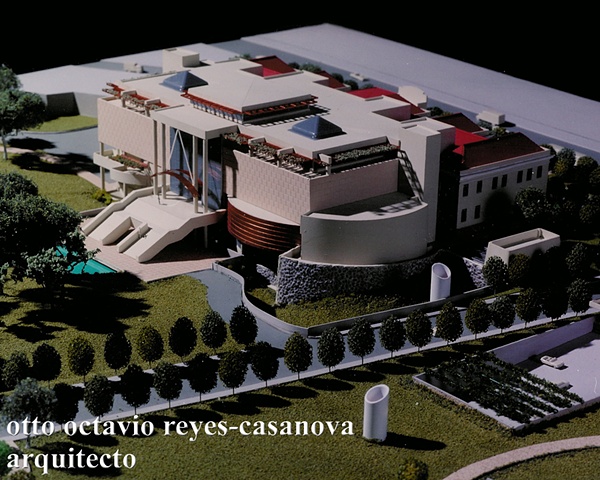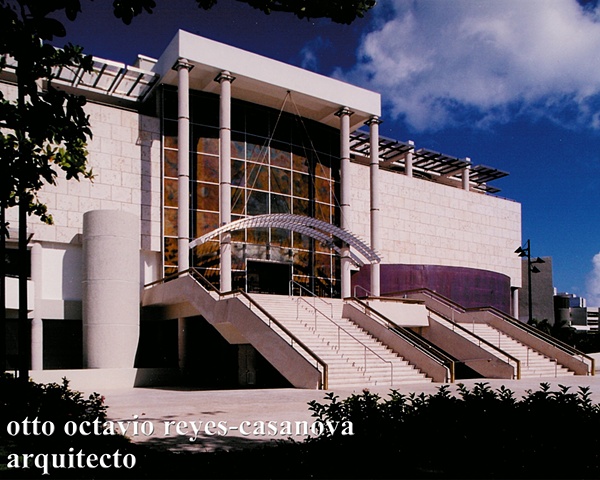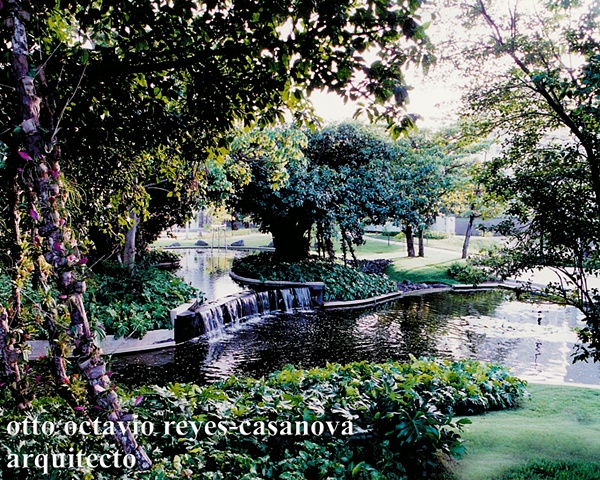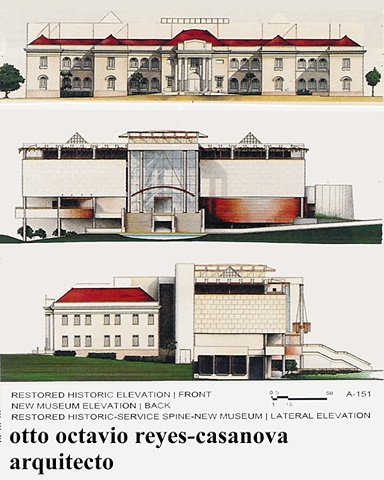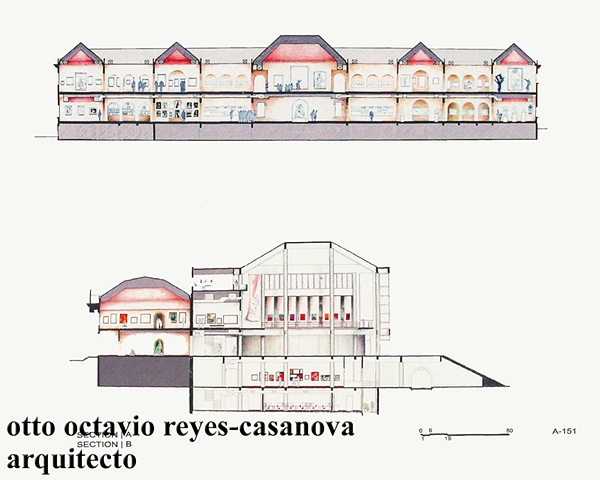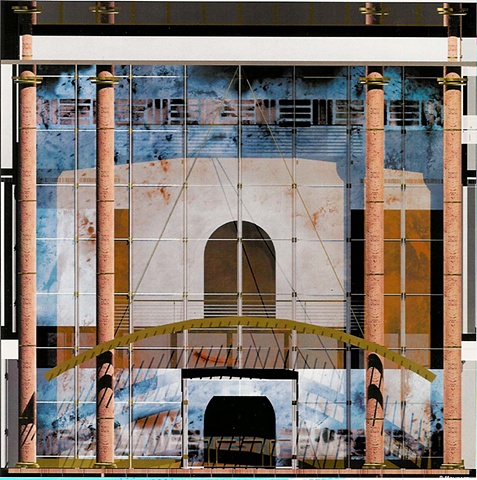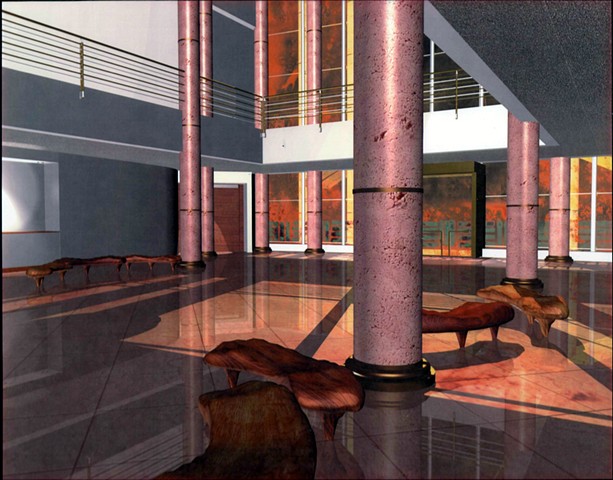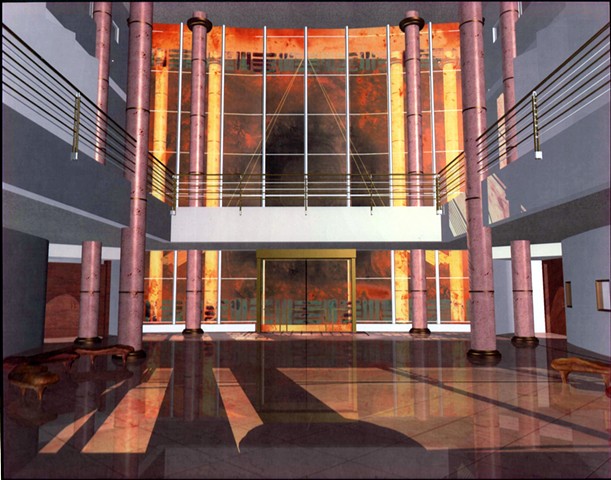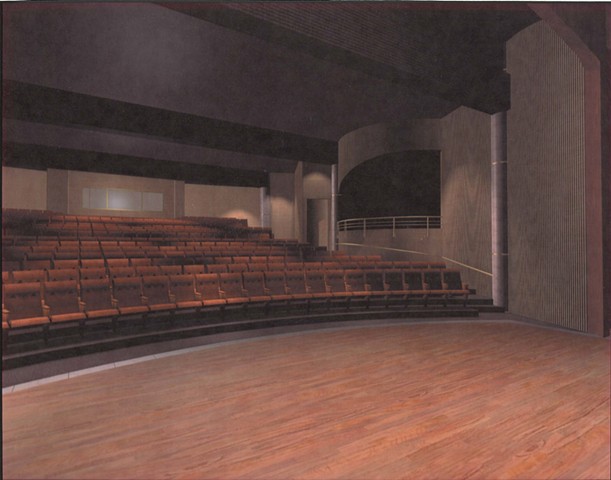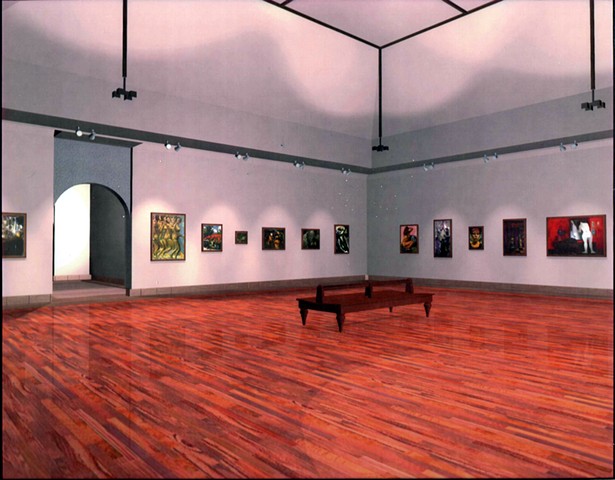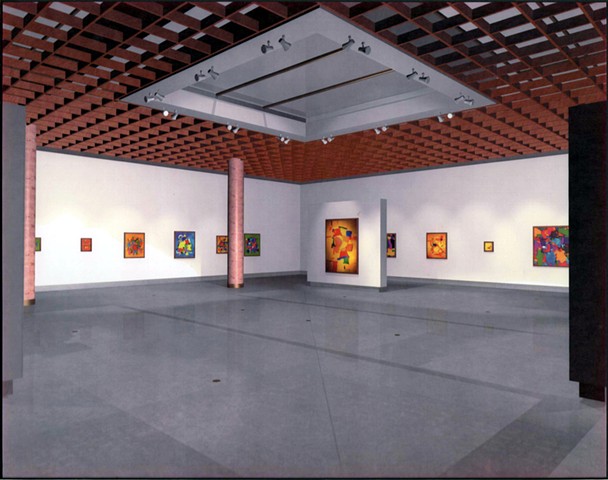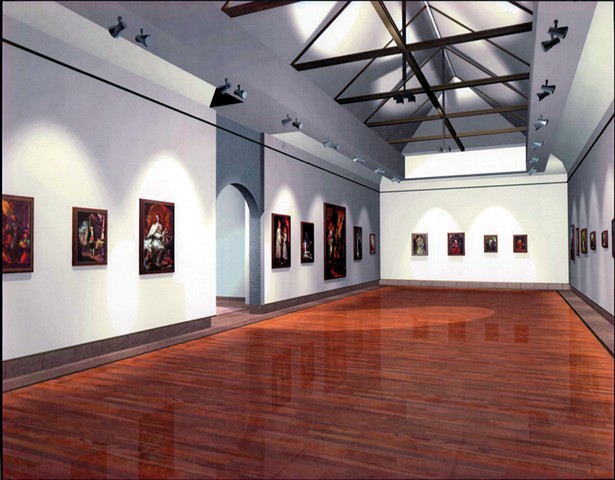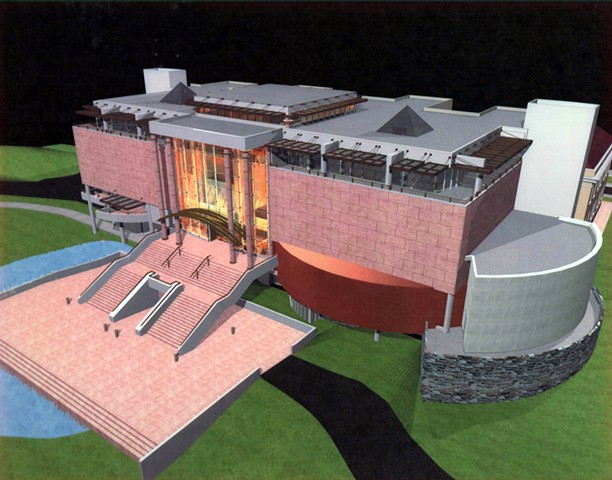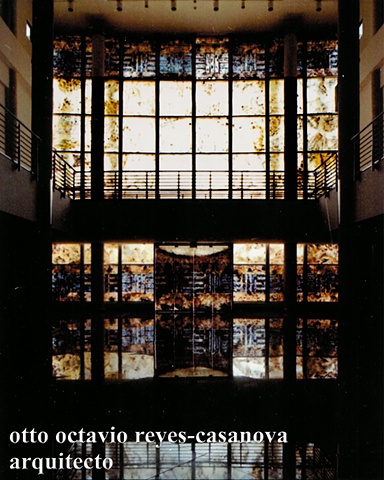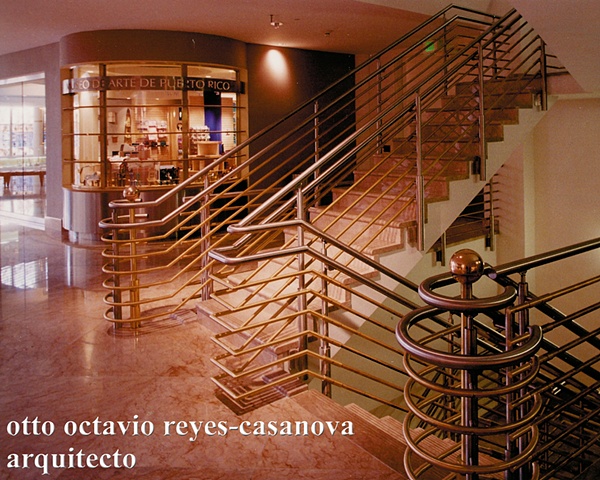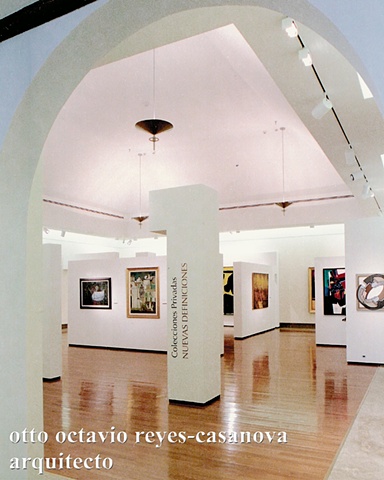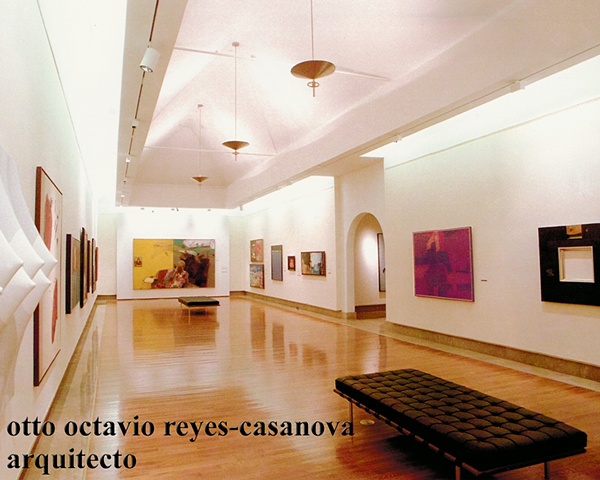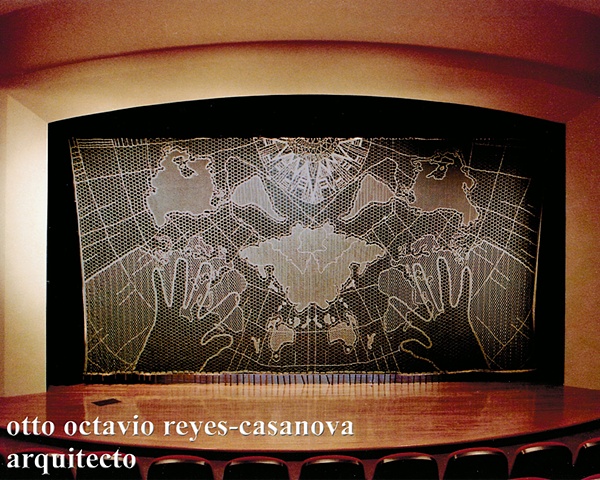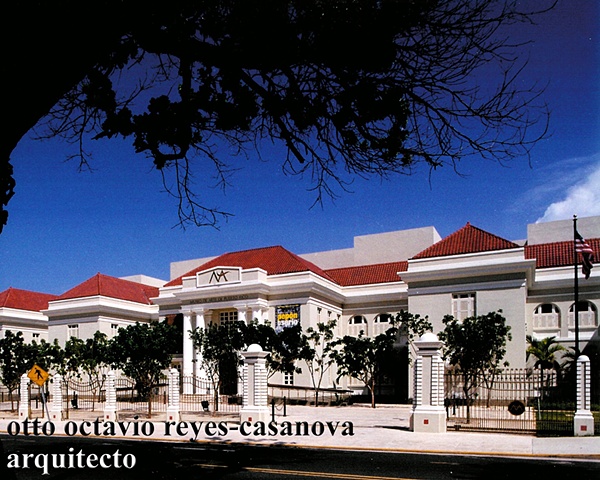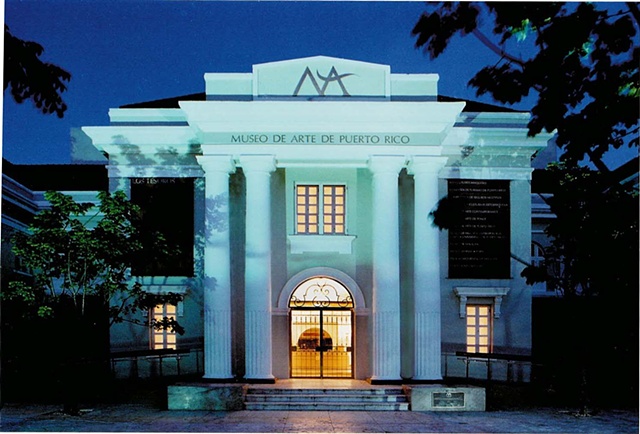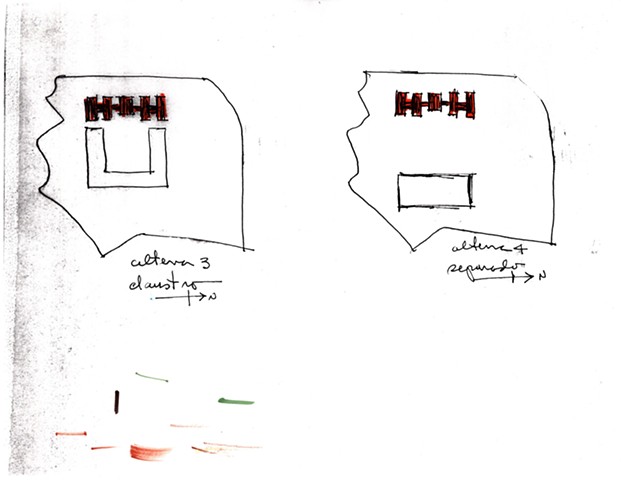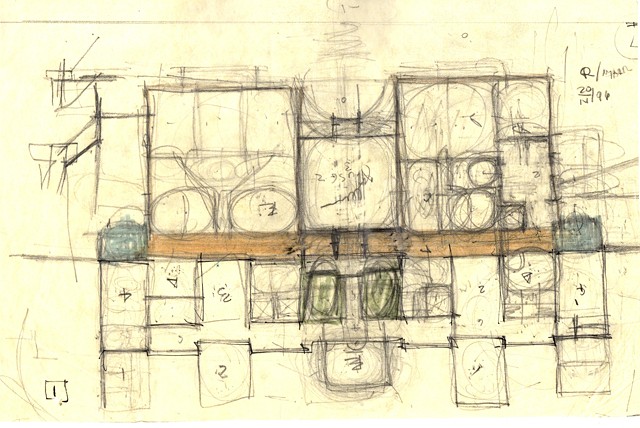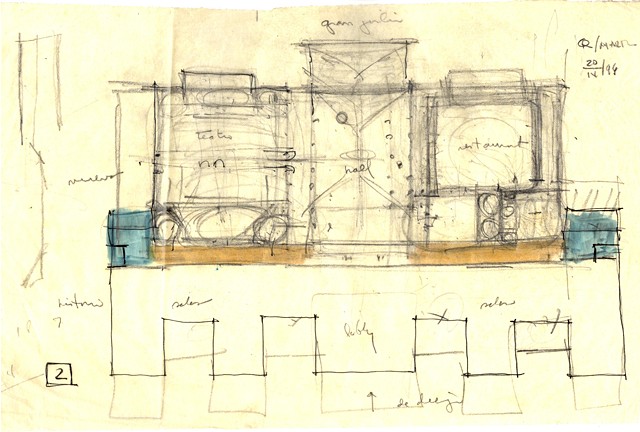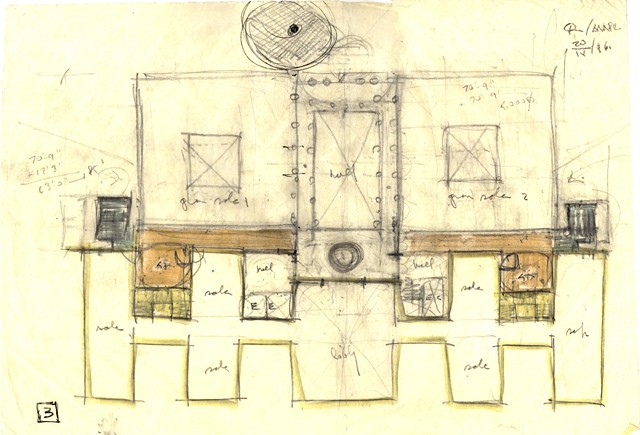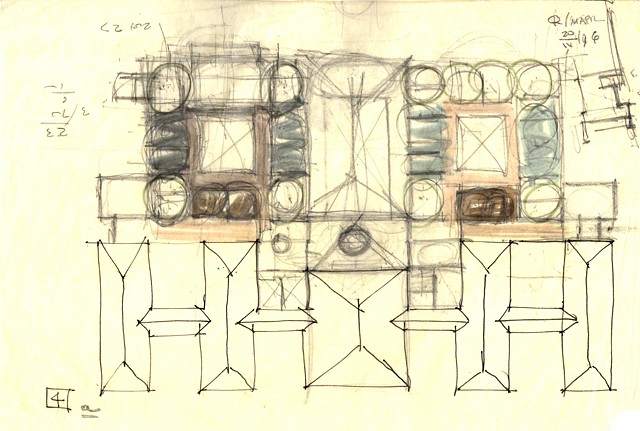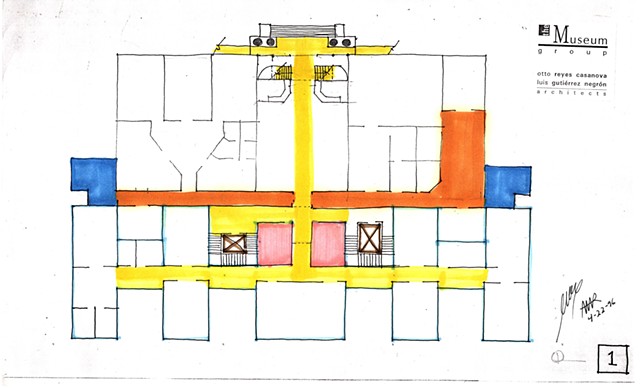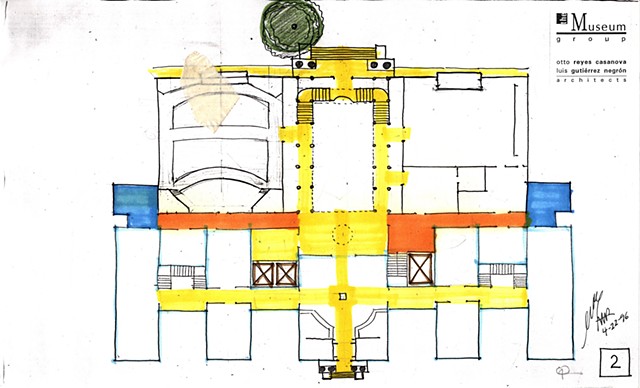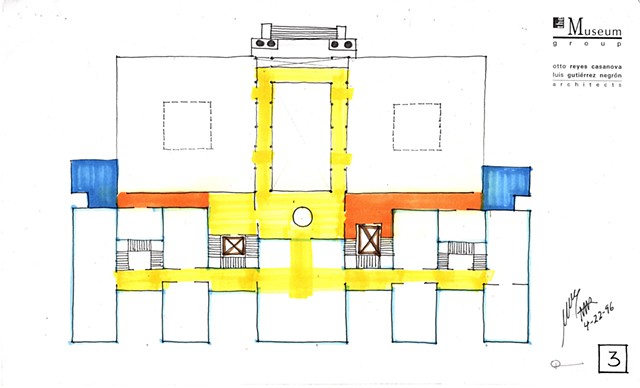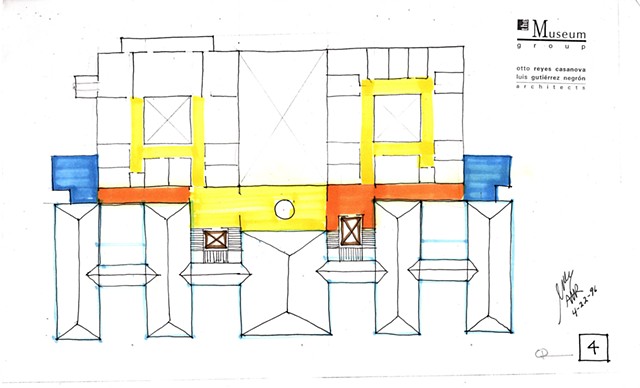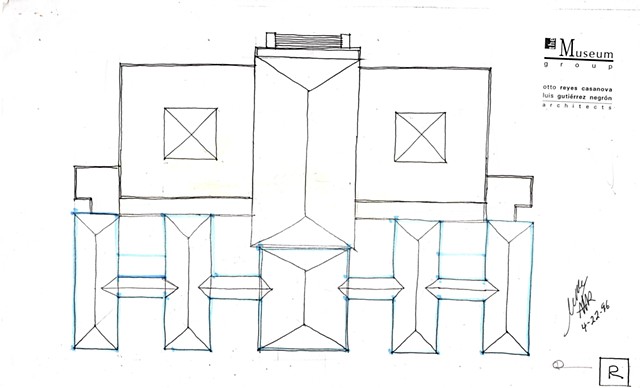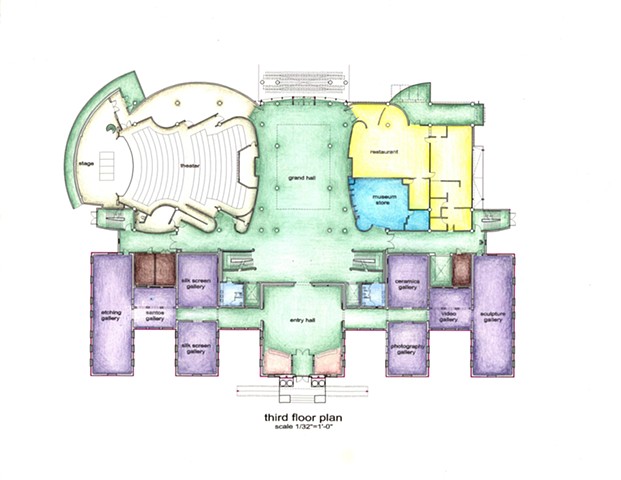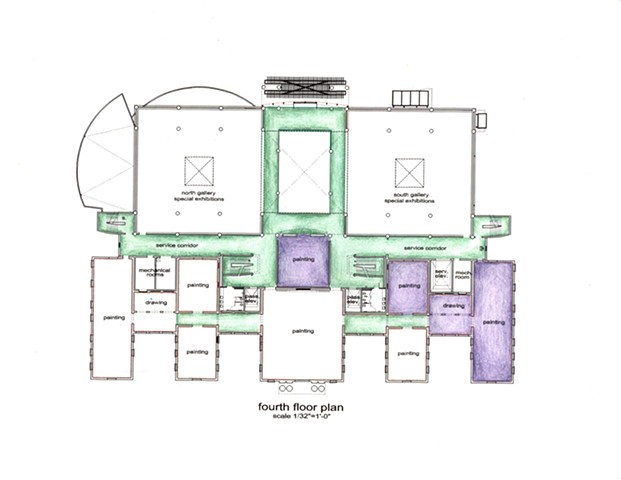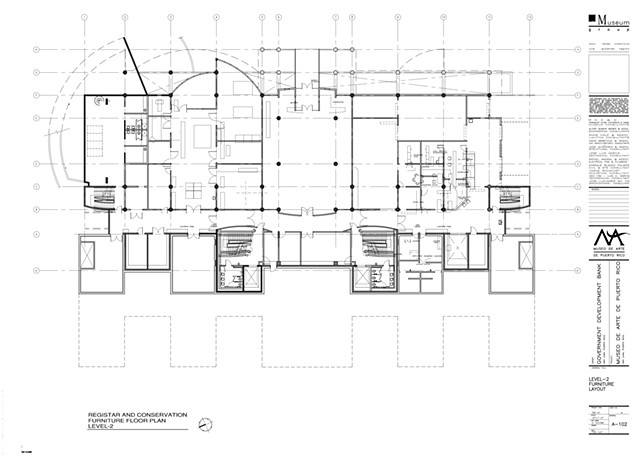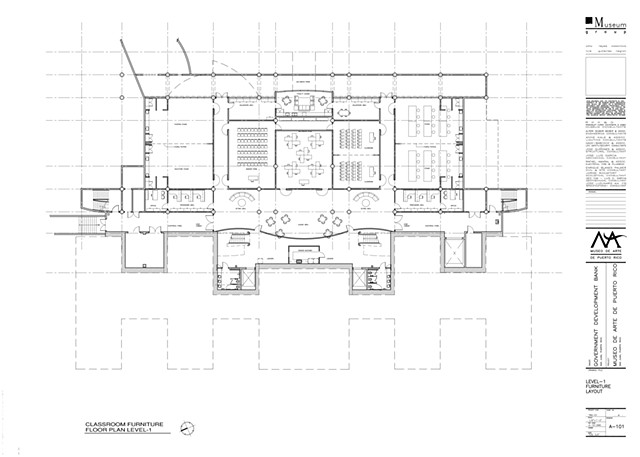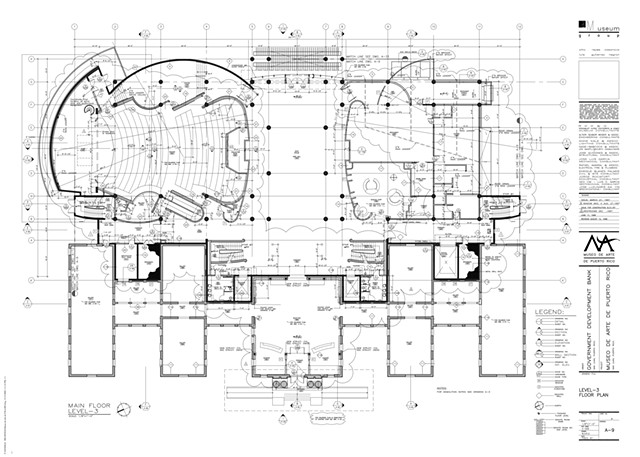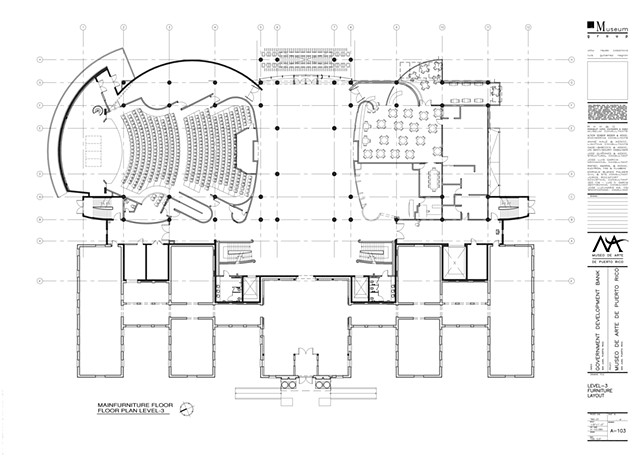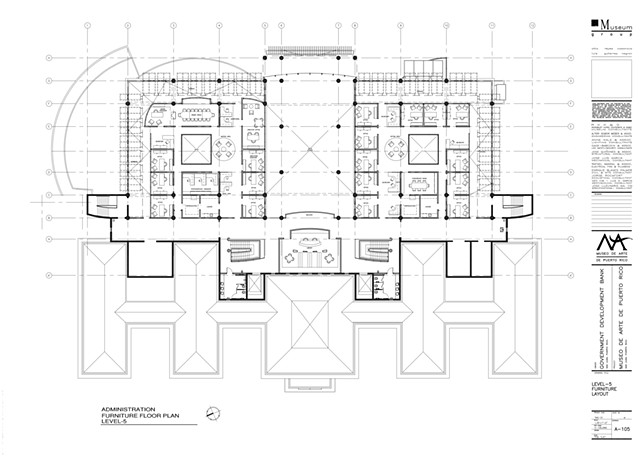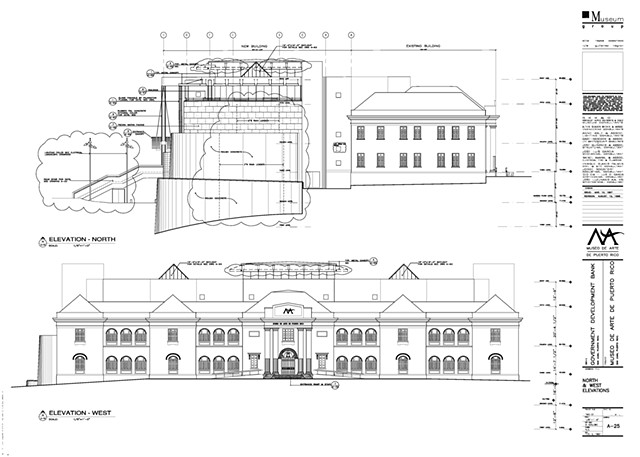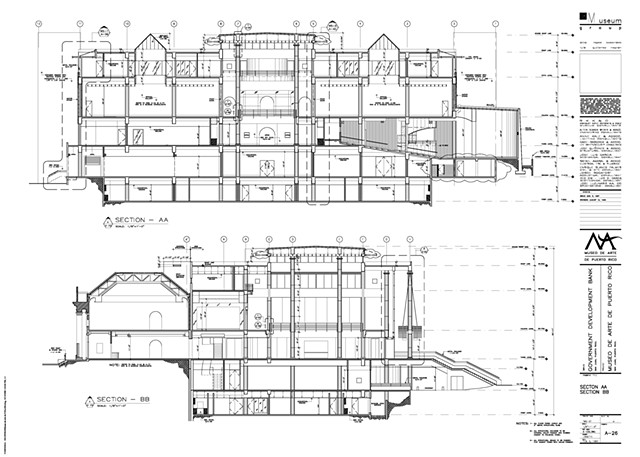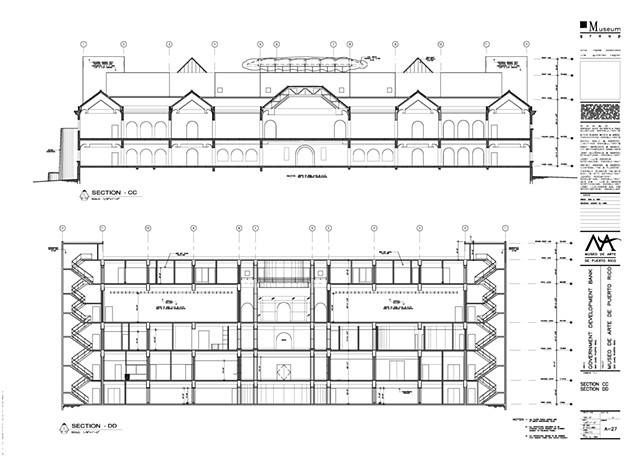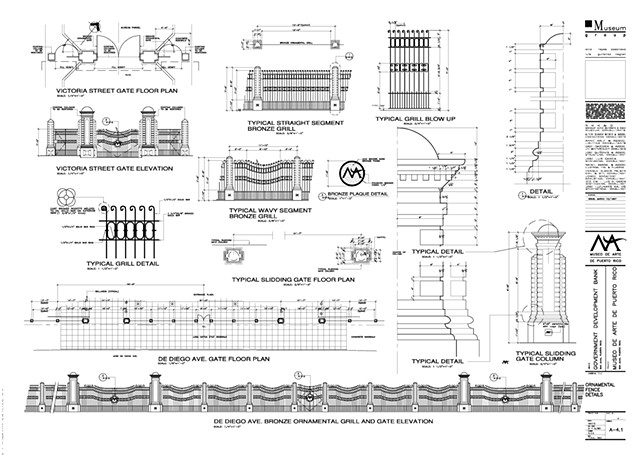Museo de Arte de Puerto Rico. 2000
AIA Florida Award for Excellence in Architecture ID# A 51
Descriptive Data Sheet
1. Type of Project
Museo de Arte
Rehabilitation of a historic building and the construction of a new East Wing to house
the National Art Museum.
2. City, County, State of Country
San Juan, Puerto Rico
3. Date of Completion
Inaugurated July 2000
4. Type of Construction materials, mechanical systems, or other pertinent technical
information:
Reinforced concrete, stone, metal (steel, aluminum, stainless steel and bronze), wood and glass. The Museum incorporates State of the Art mechanical and electrical systems to achieve absolute temperature of 70 F and 50% relative humidity control with constant stability, an achievement or a tropical climate. This system is designed to operate 365 days a year, 24 hour a day, with 100% electrical emergency backup.
5. Please state any technical environmental or social advancement in regards to your project:
The 1924 historical hospital building is recycled into an art museum. The new wing is compact and integrated in modulation, and volumes with the historical as an inseparable entity, spacing the garden and the old trees. This compactness is achieved by complex underpinning, floating the historic structure on piles, excavating behind and under. The watering of the high water table and trapped water lenses was also an interesting engineering feat. The parking structure is underground with gardens on the roof, hence maximizing the green areas. We planted over 350 new trees (365-one for each day) which together with the centennial trees have created a green oasis in the concrete city, with great public visitation. This project, inserted into a depleted city area has sparked vigor and energy into the urban fabric and its citizens.
6. In maximum of 250 words, describe the basic program requirements, special site problems, and how the design process and solution satisfies these:
See attached page.
7. Statement by the client that the design project design satisfies the requirements of the program:
See attached page.
AIA Florida Award for Excellence in Architecture ID # A 151
6. In a maximum of 250 words, describe the basic program requirements, special site problems,
and how the design process and solution satisfies these:
The design program called for the recycling of neo-classical building, designed in 1924 by
Texan architect William Schimelpfenning. This building was part of a larger 13 medical complex, abandoned in 1960. This only remaining building the Surgery Hospital was in a bad
state of repairs, with collapsed roofs, water leakage and totally vandalized, saved due to its
aesthetic and historical value.
The original building with 30,000 sf in two floors requited a new addition of 100,000 sf, over three times as large. The unique challenge was to add this large volume, a 600 car garage, access and service areas and yet, respect the historic presence and save the large trees.
Solutions:
1. The new east wing, three times larger is developed in five stories, two below and one above minimizing volumetric impact from the streetscape.
2. Footprint is compact, reducing perimeter walls for climate and security control.
3. New wing merges into the old using the same axial spacing into an inseparable entity.
4. Old wing houses the permanent collection, the new functions by layers, L1 Education, L2 Museum functions, L3 and L4 public, rentable and itinerary exhibit spaces, and L5 administration. This clear division together with a symmetrical axial organization makes orientation easy.
5. A hallway separate old from new and serves as an umbilical technical tunnel.
6. Interior are a soft color palette creating peaceful, neutral ambiance highlighting art. Art commissioned from leading artists integrates o architecture.
AIA Florida Award for Excellence in Architecture ID# A 151
7. Statement by the client that the design project design satisfies the requirements of the program.
The design program required three basic things: 1, that the building as the National Museum had to be a statement and a mayor landmark in the urban scene to spark the revival and the enjoyment of the visual arts in Puerto Rico; 2. that the project integrate State of the Art museological technical systems, total climate control, security and a clear and logical distribution of circulation, spaces and functions: and 3. that the building would be able to offer flexible and multiple opportunities to produce income by renting and leasing public spaces as a source of revenue.
The architect achieved all three goals beyond our expectations. In the last six months since its opening (July 2000) the Museum of Art has become a mayor landmark, simple, elegant, functional, a symbol for the renaissance of the visual arts, and loved by all for the memorable quality of its interior spaces. Already in the first six months, the Museum has received over 85,000 visitors.
The fact that the Musse d’Orsey, in France has loaned important art for the Museum exhibits testifies that the building has met the highest international museological standards. The facilities offer multiple rental and income producing possibilities, generating considerable funds. I, as past Treasurer, and now President of the Board of Directors, for the Museo de Arte, with the responsibility for providing for the financial health of the institution keep reminding my fellow trustees that:
“The Museum is a good product, and hence easy to sell”
As incredible as it may seem, the complete project was achieved in five years, from conception to inauguration, by a fast track construction method with over twelve separate contracts. The project was on time and in budget.
But, more import that meeting the three basic requirements of the program, is the fact that the Museum has established itself as an important landmark for both residents and tourists, leading force in the revival of the visual arts in our country, a source of national pride. The exteriors, the gardens, the interiors, the galleries, the great hall, the theater and other facilities are a joy to see and experience.
Miguel Vazquez Deynes
President
Board of Directors
Museo de Arte
